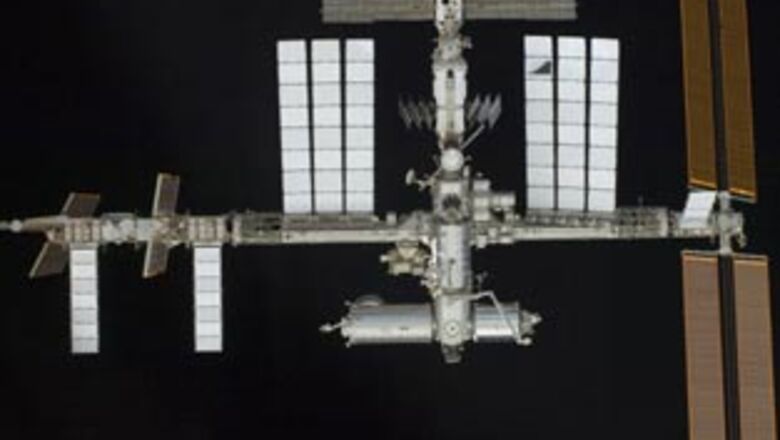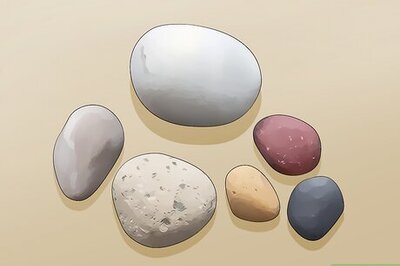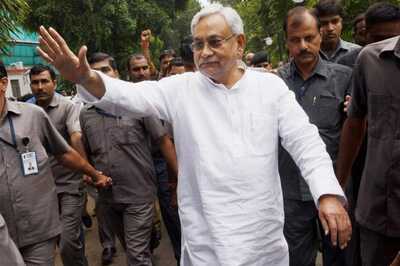
views
Washington: The near-hit of space junk on Thursday was a warning shot fired across the bow of the international space station, experts said. There probably is more to come.
With less than an hour's notice, the three astronauts were told they would have to seek shelter in a Russian capsule parked at the space station in case a speeding piece of space junk hit came their way.
If it had hit and they were in the main part of the station, they would have had only 10 minutes of safety, Mission Control told them. A hole in the space station could mean loss of air, loss of pressure and eventual loss of life.
The crew moved so fast that they may have left their instruction manual on the other side of a closed hatch. Inside the Soyuz, they waited for 10 minutes, ready to flee to Earth if the worst happened. On the ground, space debris experts fretted.
"We were watching it with bated breath," NASA space debris scientist Mark Matney said. "We didn't know what was going to happen."
The debris missed. Engineers still do not even know by how much and may never get a good figure. It could have been a few hundred feet (meters) or a couple of miles (few kilometers).
In space, Commander Mike Fincke said they watched out the Soyuz window.
"We didn't see anything of course. We were wondering how close we were," he radioed Houston.
Matney, who has been with NASA since 1992, called it the closest call he can ever remember.
It happened a month after two satellites collided in orbit, adding several hundred pieces into the space litter belt. And in the last few years, the problem of debris in space has become much worse with satellites destroyed on purpose.
"It's yet another warning shot that we really have to do something about space debris now. We have to do something on an international level," said Harvard astrophysicist Jonathan McDowell.
"As we continue to put stuff up there, the predictions are that the rate (of close calls) will increase," added director of the Center for Orbital and Reentry Debris Studies at the Aerospace Corp. in California William Ailor.
The US Space Command tracks 13,943 orbiting objects four inches (10 centimeters) or larger. Only about 900 of those are working satellites, McDowell said. The rest is litter. Thousands more smaller pieces of junk cannot be tracked as easily.
In space, size does not matter too much after about three or four inches (7.5 to 10 centimeters). But speed does. The object that put the scare into the space station was probably five inches (12.5 centimeters), Matney said. McDowell figures it was even bigger, maybe one foot (.3 meter): "a long, thin thing" with a thread or string attached.
PAGE_BREAK
It was traveling 5.5 miles (9 kilometers) per second — about 20,000 mph (32,185 kph)), according to NASA spokesman Josh Byerly.
At that speed, something five inches (12.5 centimeters) "will wreck your whole day," Matney said.
Usually with enough warning, NASA will just move the space station out of harm's way. But NASA did not learn of the threat until Wednesday night. This piece was in an odd orbit that kept dipping into Earth's atmosphere, making it hard to track, Matney said.
NASA did not notify the astronauts until a couple of hours after they awoke on Thursday because they wanted to try to get more information about the debris, said NASA spokesman Kyle Herring.
The object probably was a "yo weight" used to stabilise a global positioning satellite placed in orbit in 1993, McDowell and Matney said. It is ejected when the satellite is in its proper position.
NASA spokesman Byerly said station crews have used Soyuz as a precaution five times because of debris. But NASA space junk expert Matney said he could not recall that it ever had been used because of space debris.
The space station and space shuttle have been hit by debris in the past. So far the only holes have been in the station's solar panels and in the shuttle radiator, neither of them dangerous, McDowell said.
"It just needs to hit at exactly the wrong place, and then you have a problem," McDowell said.
The trash is even worse in the orbit of the Hubble Space Telescope. The February satellite crash increased the risk of junk hitting the space shuttle when it repairs Hubble. NASA still is calculating whether it would be safe enough to do the repairs this year.
Smaller space debris often falls into lower orbit and eventually burns up as it returns to Earth. But David Wright, a physicist with the Union of Concerned Scientists, said, "some of the big things will be up there for centuries, and those are the ones that can really wreak havoc."
Lately, countries and companies launching satellites design their rockets and satellites to limit debris. That needs to be made mandatory, McDowell said. The latest problems may spur that type of action, Ailor said.
Russia's state-run Vesti-24 television reported on a lighter moment in the space station evacuation. Apparently the crew members left an instruction manual on board and Fincke had to be told by Mission Control how to go about getting back onto the station once the threat had passed.




















Comments
0 comment